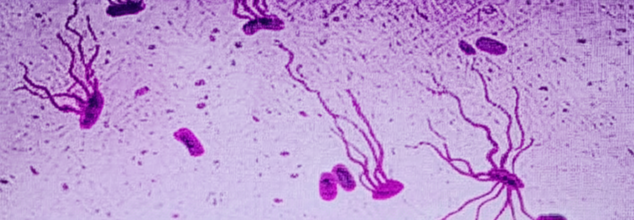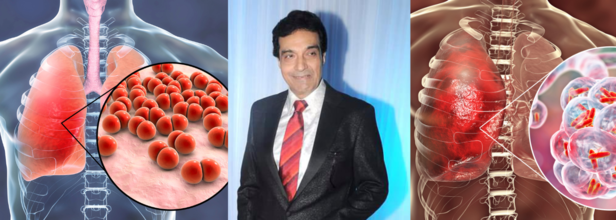- Health Conditions A-Z
- Health & Wellness
- Nutrition
- Fitness
- Health News
- Ayurveda
- Videos
- Medicine A-Z
- Parenting
- Web Stories
RSV Vaccine Now Free For Pregnant Women: Know All About It Before Getting Vaccinated

Image Credit: Canva
Australia is making a giant leap in safeguarding its youngest citizens from respiratory syncytial virus, the leading cause of infant hospitalization. From February 3, pregnant women across the country will be eligible for a free RSV vaccine, Abrysvo, under the National Immunisation Program. This $174.5 million initiative promises to save lives and ease the burden on healthcare systems, particularly during the winter months when RSV cases peak.
RSV is an extremely contagious droplet infection causing mainly respiratory infections among children. It hospitalizes around 12,000 Australian babies every year. Most of these require intensive care. The common symptoms are nasal discharge, fever, cough, wheezing, and breathing difficulty. In most adults and older children, recovery is usually prompt, but it can be fatal for infants.
The head of epidemiology at Deakin University, Catherine Bennett described RSV as "particularly nasty" to small children. They really can't help but battle to breathe well sometimes require ventilators. It may kill them as well. And hence, prevention via vaccination would prove very significant for them.
So, How Does the Vaccine Work?
The RSV vaccine Abrysvo, which is developed by Pfizer, is administered to pregnant women between 28 and 36 weeks of gestation. It stimulates the mother's immune system to produce RSV-specific antibodies that are passed on to the baby through the placenta. Maternal antibodies offer newborns immediate protection during their most vulnerable months, reducing the risk of severe illness by 70% in the first six months of life.
The vaccine will help in saving more lives, says health experts. The president of Royal Australian College of General Practitioners Dr. Michael Wright added, "It will keep the babies safe and save the money of the expectant families. RSV has to be taken very seriously. I would urge all pregnant women to take this vaccine once it's available."
RSV is pervasive, with most children contracting it at least once before their second birthday. The Australian Respiratory Surveillance Report recorded over 172,000 RSV cases in the past year, highlighting the virus’s extensive reach.
Between 2016 and 2019, over 115,000 RSV-related hospitalizations were reported, three-quarters of which involved children under five. Infants under six months are particularly vulnerable due to their underdeveloped immune systems.
Also Read: Postpartum Nutrition Guide: Foods Every New Mom Needs For Recovery And Lactation
Other High-Risk Infants' Options and Alternatives
While Abrysvo protects mother, there exists another preventive care for infants, nirsevimab. Since it is different from a routine vaccine, a monoclonal antibody injection imparts ready made immunities against the RSV attack. It goes well with risky infants or ones whose mothers failed to get themselves vaccinated with an RSV antibody during pregnancy.
As Australian National University infectious diseases specialist Dr. Sanjaya Senanayake explained, "With vaccinations, you're trying to induce immunity, but a monoclonal antibody means you give the ready-made antibodies to that person, so they don't have to make the antibodies for themselves."
Nirsevimab has been integrated into programs in states such as New South Wales, Victoria, and Western Australia, targeting eligible infants based on RSV seasonality. However, its cost-effectiveness has been a point of contention, delaying its inclusion in broader national immunization schemes.
Australia's RSV initiative is a global trend. The Food and Drug Administration in the United States has approved the Pfizer RSV vaccine to be administered in pregnant women from 32 weeks to 36 weeks of gestation during the RSV season, which typically falls between September and January. The vaccine introduction has greatly decreased infant hospitalization in regions where immunization programs are well set up.
Should You Get Vaccine During Pregnancy?
Extensive studies have been conducted about the safety of RSV vaccines in pregnant women. Data from clinical research involving nearly 4,000 pregnant women show that vaccination is safe. Although more vaccinated mothers experienced premature births (2.1% compared to the 1.9% rate in the control group), researchers believe the difference is statistically insignificant.
The vaccine has already been approved by regulatory bodies in the U.S., U.K., and Europe, with post-market surveillance confirming its efficacy and safety.
Despite vaccination, RSV remains difficult to control because of its high transmissibility. The virus spreads quickly through coughing, sneezing, and contact with contaminated surfaces, making it hard to prevent within households and childcare settings. Basic hygiene measures such as handwashing and covering one's mouth when sneezing can help, but vaccination remains the most effective strategy to curb severe infections. Impact of the RSV Vaccination
Health Minister Mark Butler has described the introduction of the RSV vaccine as a "game-changer" for maternal and infant health. The program is expected to reduce infant hospitalizations by up to 10,000 annually, easing the strain on healthcare systems and providing peace of mind to families.
"This program will significantly relieve pressured hospitals during difficult winter months and reduce the distress for parents who have to see their newborns hospitalized due to RSV," Butler said.
What Pregnant Women Need to Know About RSV Vaccination
Pregnant women are advised to talk to the health care professionals about RSV vaccination. The National Immunisation Programme has made it available free to all eligible mothers, as a result of it being free for all eligible mothers.
For pregnant women who might miss the shot during pregnancy, it is well recommended that the newborn be sought for nirsevimab vaccination from a pediatrician.
The landmark move in introducing free RSV vaccines for pregnant women in Australia would save thousands of infant lives annually. It equips newborns with maternal antibodies to provide a lifeline to vulnerable babies during their earliest months of life.
Such programs highlight the significance of vaccination for public health and how RSV cases continue to burden families and healthcare systems. This is a good opportunity for pregnant women to protect their babies as they begin life with the best defense against RSV.
Perinatal Outcomes After RSV Vaccination During Pregnancy—Addressing Emerging Concerns. JAMA Netw Open. 2024
This Age-Old Killer Is Spreading Fast, Why Super Typhoid Isn’t Just A ‘Poor Country’ Problem Anymore

Representational
Typhoid fever is not the kind of illness most people in developed nations worry about. It's often written off as a disease of the past—something that plagued ancient societies before clean water systems and antibiotics. But here’s the thing: typhoid never went away. And now, it's evolving into something much more dangerous—something even modern medicine might not be able to stop.
A large genomic study published in The Lancet Microbe in 2022 has sounded the alarm. The bacterium responsible for typhoid, Salmonella enterica serovar Typhi (or S. Typhi), is rapidly acquiring resistance to nearly all antibiotics used to treat it. More disturbingly, strains resistant to multiple drug classes are spreading beyond their traditional strongholds in South Asia and appearing across continents—including in the United States, United Kingdom, and Canada.
This is no longer a regional concern. It’s a global one.
What is Super Typhoid?
The study involved sequencing over 3,400 S. Typhi strains collected between 2014 and 2019 from patients in India, Pakistan, Nepal, and Bangladesh. The results were stark. Not only were extensively drug-resistant (XDR) strains of typhoid rising rapidly, but they were also outcompeting and replacing less resistant versions.
XDR typhoid strains are already immune to several older antibiotics—ampicillin, chloramphenicol, and trimethoprim/sulfamethoxazole. But here’s where it gets worse: many are now developing resistance to newer and more potent drugs like fluoroquinolones and third-generation cephalosporins, which until recently were mainstays of typhoid treatment.
Even the last reliable oral antibiotic—azithromycin—is showing signs of failure. The study found emerging mutations that could potentially render azithromycin ineffective. These haven’t yet converged with XDR strains, but scientists warn that it’s only a matter of time. If that happens, oral treatment options could become entirely obsolete.
For now, South Asia remains the epicenter of the crisis, accounting for about 70% of the global typhoid burden. But this doesn’t mean the threat is contained.
Researchers tracked nearly 200 instances of international transmission since the 1990s, most involving travel or migration. Typhoid "superbugs" have been detected in Southeast Asia, East and Southern Africa, and in wealthy nations where the disease was thought to be virtually eradicated.
“The speed at which highly-resistant strains of S. Typhi have emerged and spread is a real cause for concern,” said Dr. Jason Andrews, an infectious disease specialist at Stanford University who co-authored the study.
Why Is Treatment Is Failing?
If antibiotics are failing, what’s next? For starters, prevention. Experts say the most immediate and scalable solution lies in typhoid conjugate vaccines (TCVs). These vaccines offer strong, long-lasting protection and are safe for children as young as six months old. But access is patchy.
Pakistan became the first country to introduce TCV into its national immunization program in 2019—an urgent response to the first major outbreak of XDR typhoid that hit its population. Since then, the move has become a case study in how vaccination can cut off the disease at its roots.
India, Bangladesh, and Nepal have followed suit with pilot programs and localized rollouts, but global coverage remains far too low. Meanwhile, high-income countries have not prioritized TCV access at all, largely because typhoid isn’t seen as a domestic threat.
Antibiotic Resistance Crisis at Large
This typhoid crisis isn’t an isolated story. It’s part of a larger, systemic problem: antibiotic resistance is now one of the top global causes of death. A 2019 study published in The Lancet estimated that antimicrobial resistance was directly responsible for 1.27 million deaths worldwide, surpassing HIV/AIDS and malaria.
Typhoid is just the latest face of that threat. If azithromycin fails, intravenous treatments will be the only remaining option. This is not sustainable for low-resource settings, where typhoid is most rampant.
And as the S. Typhi genome continues to adapt, the search for novel antibiotics becomes more urgent but the global antibiotic pipeline is worryingly dry. Very few new drugs are being developed, and those that are rarely target neglected tropical diseases like typhoid.
How Globalization Makes It Everyone’s Problem?
COVID-19 reminded us how quickly a localized health threat can go global. Typhoid is no different. The bacteria travel with people—through tourism, immigration, and international trade.
The difference is: we already have tools to stop this. TCVs work. Better sanitation and access to clean water help. Public health messaging and travel guidelines can make a difference. But we’re not moving fast enough.
A recent Indian study estimated that vaccinating children in urban areas could reduce typhoid cases and deaths by up to 36 percent. That’s a significant dent—especially when combined with infrastructure upgrades and careful antibiotic stewardship.
What Happens If We Do Nothing?
If left unchecked, drug-resistant typhoid could become nearly impossible to treat in outpatient settings. That means more hospitalizations, more strain on health systems, more deaths—particularly among children in developing nations.
With around 11 million cases of typhoid annually, even a small increase in resistance could tip the balance into a major health crisis.
And if XDR strains gain resistance to azithromycin, we will be left with zero effective oral drugs, none. The path forward is clear—and urgent. Here’s what needs to happen:
- Expand global access to typhoid conjugate vaccines, especially in endemic regions.
- Invest in next-generation antibiotics that target typhoid and other neglected infections.
- Implement stricter regulations on antibiotic use in agriculture and medicine.
- Strengthen global surveillance systems to detect resistant strains early and contain outbreaks.
- Raise awareness that typhoid is not just a problem for the developing world.
Antibiotic resistance isn’t science fiction. It’s a biological reality. And typhoid is just one example of how quickly things can unravel when we underestimate an ancient enemy.
We can still turn the tide but only if we act with urgency and coordination. The warning signs are flashing red. Typhoid isn’t gone. It’s evolving. And this time, it may be deadlier than ever.
1 In 4 Indian Couples Are Overweight, Finds ICMR; How Obesity Is Now Becoming A Relationship Problem?

Credits: Canva
Obesity is no longer just a health issue, it is increasingly becoming a social phenomenon and a lifestyle disease. A recent study published in Current Developments in Nutrition, led by the Indian Council of Medical Research (ICMR) has found that 27.4% of Indian married couples share similar overweight or obese status.
Analyzing data from over 52,000 married couples across India using the National Family Health Survey (NFHS-5, 2019–21), the study points to a troubling pattern- in wealthier, urban households, especially among young couples, there is a significantly higher risk of both partners becoming overweight or obese. At its core, this research uncovers how daily habits, routines, and food choices within marriages are driving a quiet but dangerous health trend across the country.
Are Shared Habits A Risk Factor for Married Couples?
Unlike genetically linked conditions, obesity in married couples cannot be attributed to shared biology. So how does this mirroring occur? It is in environmental exposure, mutual behaviors, socio-economic context, and emotional co-regulation.
According to lead researcher Dr. Prashant Kumar Singh of ICMR’s National Institute of Cancer Prevention and Research, spousal similarities in health outcomes ranging from obesity and hypertension to smoking and sedentary behavior stem from shared lifestyles. These include eating patterns, physical activity (or lack thereof), screen time, media consumption, and stress management. Over time, habits converge especially in nuclear families with fewer social checks and less structured meal routines.
The study found that urban couples had a 38.4% concordance rate, significantly higher than rural couples (22.1%). Among the wealthiest households, this figure jumped to 47.6%, compared to only 10.2% in the poorest.
Where Obesity in Couples Is Rising Fastest In India?
Geographic disparities highlight how development and affluence correlate with rising obesity. States and territories with the highest spousal obesity concordance include:
- Kerala (51.3%)
- Jammu & Kashmir (48.5%)
- Manipur (47.9%)
- Delhi (47.1%)
- Goa (45.0%)
- Tamil Nadu (42.7%)
- Punjab (42.5%)
By contrast, states in eastern and northeastern India—where economic development is slower—showed much lower concordance rates, typically ranging from 19% to 22%.
“These figures underscore India’s uneven nutrition transition,” explains Dr. Shalini Singh, senior co-author of the study. “In wealthier regions, processed food consumption and reduced physical activity are becoming the norm. Marriage and cohabitation intensify these shared exposures, turning households into hotbeds of metabolic dysfunction.”
Is This A Disturbing Trend Among Under-30 Couples?
Perhaps the most concerning revelation is the early onset of weight gain in young couples. The study shows particularly high obesity concordance in couples under the age of 30, especially in Kerala (42.8%), Goa (37%), Jammu & Kashmir (31.6%), and Tamil Nadu (29.6%).
“This trend is alarming because early obesity increases the lifetime risk of chronic conditions like type 2 diabetes, cardiovascular disease, PCOS, and metabolic syndrome,” says Dr. Singh. “We’re seeing the impact of lifestyle-driven diseases unfold during what should be the most productive and healthiest years of life.”
The study also examined behavioral patterns that reinforce spousal weight concordance. For instance, 32.8% of couples reported regular television watching, while 39.6% reported newspaper reading, both indicative of sedentary behavior. Dependence on processed and ultra-processed food, especially in nuclear households, was another major contributor.
Interestingly, couples with similar education levels (about 45.2%) showed higher obesity concordance (31.4%), likely due to aligned food preferences, media consumption, and leisure routines.
The type of family structure also mattered. Nuclear families had a 28.9% concordance rate, higher than the 25.9% seen in joint families, where shared responsibilities and traditional food habits often foster more physical activity and balanced meals.
This Indian data fits into a much broader global trend. According to the World Obesity Atlas 2022, over 2.5 billion adults (43% of the global population) were overweight, and 890 million (16%) were obese. The burden of obesity now surpasses many infectious diseases and contributes to over 160 million years of healthy life lost annually due to comorbidities like heart disease, stroke, sleep apnea, and several cancers.
In India alone, obesity rates among adults are expected to climb significantly by 2040—27.4% of women and 30.5% of men, up from roughly 24% in 2021. If the patterns observed in married couples hold, these numbers could surge even faster than projected.
The study calls for a paradigm shift in how health interventions are designed. Rather than focusing on individuals, researchers urge a couple-based or household-level approach that takes into account the social dynamics of behavior change.
“Obesity is socially transmissible,” Dr. Singh emphasizes. “So the solution must also be social. Targeted public health messaging, fitness programs designed for couples, dietary counseling for families, and insurance incentives for preventive care at the household level are the need of the hour.”
Additionally, there’s a need to engage urban, affluent, and media-exposed demographics—who are often the earliest adopters of fast food, sedentary habits, and digital lifestyles—with interventions that feel relevant, aspirational, and sustainable.
As global health systems grapple with the rising burden of noncommunicable diseases, the Indian study offers a crucial insight: marriage can amplify risk—but also holds the key to prevention. By targeting couples early and acknowledging the influence of shared environments, public health systems can make strides in reversing obesity trends.
Veteran Actor Dheeraj Kumar Dies At 79 Due To Acute Pneumonia

Credits: Canva and Wikimedia Commons
Veteran actor and producer Dheeraj Kumar, best known for his contributions to Hindi and Punjabi cinema, passed away at a private hospital in Mumbai on Tuesday, July 15. He was 79.
Admitted with Pneumonia, Succumbed to Organ Failure
According to sources close to the family, Kumar had been admitted to the Intensive Care Unit after being diagnosed with acute pneumonia. His health took a critical turn on Monday as he suffered multiple organ failure and was subsequently placed on ventilator support. He breathed his last around 11 AM on Tuesday, with his son by his side in his final moments.
A Career That Began With a Talent Contest
Dheeraj Kumar’s journey into the world of entertainment began in the mid-1960s, when he participated in a talent contest that also featured Rajesh Khanna and Subhash Ghai. In a 2012 interview with The Hindu, Kumar recalled:
“In a talent contest in Mumbai in the 1960s, three were selected to be actors among some 10,000 aspirants — Rajesh Khanna, myself and Subhash Ghai... He became a superstar.”
Also Read: Shubhanshu Shukla Returns From ISS, What All Medical Examinations Are Lined Up
Kumar went on to act in several films, including Rakhwala, Tyaag and Sargam, and shared screen space with many leading actors of the time. Over the years, he transitioned into television production and was known for creating popular shows such as Om Namah Shivay and Shree Ganesh. His last known collaboration with Rajesh Khanna was a TV series in 2019.
Understanding Pneumonia and Its Risks
As per the American Lung Association, pneumonia is an infection that causes inflammation in the air sacs (alveoli) of one or both lungs. These air sacs may fill with fluid or pus, leading to symptoms that range from mild to life-threatening. Acute pneumonia, in particular, can cause sudden and severe respiratory symptoms.
Some of the common symptoms include:
- Persistent cough with yellow, green, or bloody mucus
- High fever, sweating and chills
- Shortness of breath and chest pain while coughing or breathing
- Fatigue, nausea or vomiting
- Confusion, especially in older adults
Kumar’s condition is a reminder that pneumonia can escalate quickly, especially in older individuals or those with weakened immune systems.
Also Read: After Jannik Sinner, Tara Moore Makes News Failing Her Doping Test, Resulting In A 4-Year Long Ban
Can Pneumonia Be Fatal?
Yes, pneumonia can be deadly—especially when left untreated or when it occurs in high-risk individuals. According to global estimates, as noted by the American Lungs Association, over 1.8 million people die from pneumonia each year, with children under five in low-income countries being the most vulnerable. In older adults, complications such as respiratory failure, sepsis, or organ failure often lead to death.
Bacterial pneumonia is more likely to require hospitalization, but viral and fungal forms can also be life-threatening. Vaccines such as the pneumococcal vaccine and flu shots can significantly reduce the risk of infection, particularly in older adults.
Maintaining overall health, timely vaccinations, and early medical intervention are critical in preventing complications.
© 2024 Bennett, Coleman & Company Limited

